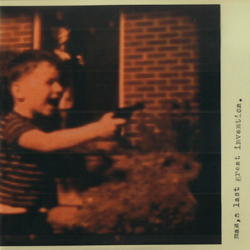Working from a severely limited sound palette - after all there are only so many notes available, even when you take the sharps and flats or just look at the black and white keys of the piano - McSusic finds an artistic diversity within this constraint. She has, for example, identified an A flat in The Rolling Stones Symphony for the Devil which is markedly different to the A flat in the third movement of Beethoven's fifth symphony. Or, taking another example, a shifting B in the middle of a Kronos quartet glissando and one in Nine Inch Nail's Ghost IV.
For each of the notes she has identified, McSusic weaves a fascinating text, exploring how the composer reached that particular note and why she has selected it: a C sharp in Brian Eno's Discreet Music, appearing briefly at 15:32 apparently is a response to a draft caused when Robert Fripp entered the studio while Eno was creating the piece, and the tape slowed marginally. Eno discusses how he debated whether to rerecord the whole section or let that note pass. As it was one of a number of Cs within the work, and following pulling out an Oblique Strategy card that read 'Do not pass: go', the note remained. As you listen to this note in the book, the pitch has a subtle tenderness that is not present in some of the other C sharps.
When talking about historical notes, where there is no composer to discuss the material with, interviews with current performers explore how they respond to the notes McSusic has identified, and how they decide to play them. Intriguing twists emerge from this - for example the different ways that the Emerson and the Duke quartets play an F flat in Shostakovitch's 7th string quartet.
Each note has been identified in a particular recording which is available on CD - this makes it possible to find all 666 notes precisely - they are often surrounded by similar notes and identifying the one in question can be difficult. There is some discussion of putting all 666 notes onto a single CD, but that would detract from the thrill of the hunt. And the notes need to be heard in their context.
The book is organised around a sorting principle based on the composers first name, the not as written in German and the difference in the year of recording and composition. Luckily both the table of contents and the index are comprehensive and assist in navigating through the book. Though ones like this are meant for dipping.
Yes - as with all lists there will be notes that you wonder why they aren't there, and countries who are under represented (very little from Australia for example, though the opening note of Rolf Harris' Sun arise gets a guernsey). But if you want to explore notes written by people as diverse as the Sex Pistols and Stravinsky, Steve Reich to Stevie Wright, Mellencamp to Miaskovsky look out for this book, and take part in the on-line debate about those missing notes on the official website..




